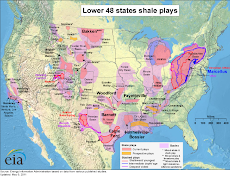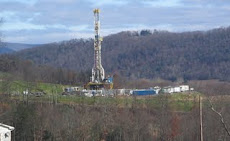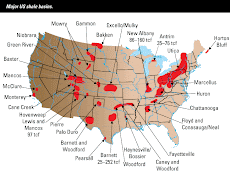Peter
Exxon Mobil sees big growth in natural gas demand
Thursday, May 31, 2012
 |
Exxon Mobil CEO Rex Tillerson says the oil giant is betting on growth in the demand for natural gas.
Dallas --
Exxon Mobil Corp. believes the demand for natural gas will grow, making it the world's second-largest energy source by 2040 - but the energy giant has a lot of gas that it wants to sell now, its top executive told shareholders at its annual meeting Wednesday.
"We're studying the possibilities of exporting natural gas from North America, from both the U.S. and Canada, because of the abundant supply that has now been confirmed in North America," CEO Rex Tillerson told shareholders.
The world's largest publicly traded company has bet big on the future of natural gas, which Tillerson believes will replace coal as the No. 2 fuel behind oil.
Exxon Mobil became the nation's largest gas producer after it acquired XTO Energy for $25 billion in 2010.
A surge in North American gas production has brought prices to their lowest levels in a decade and has created challenges for producers. Meanwhile, controversy swirls around the main drilling technique fueling the natural gas boom - hydraulic fracturing.
Tillerson said the economic pressures that have pushed natural gas prices down have not dampened the company's long-term outlook on gas.
"That's a transient condition," Tillerson told reporters after the meeting.
The meeting itself included criticisms from shareholders representing environmental concerns. Some protested the company's use of hydraulic fracturing, in which water, sand and chemicals are blasted underground at high pressure to release hydrocarbons locked in rock formations.
Among shareholder proposals were requests that Exxon Mobil draft a report on the risks of hydraulic fracturing (fracking shown to be safe in numerous studies) and that it set greenhouse gas reduction goals. (greenhouse gas theory and global warming totally discredited...see http://petesplace-peter.blogspot.com/ )
Both proposals failed by large margins.
Some shareholders saluted the company for its financial performance - a profit of $41 billion in 2011 - and its investments in education and other social programs.
Tillerson said the company's expectations that world natural gas demand will grow 60 percent by 2040 made its heavy investments, including its XTO purchase, valuable.
"There's no regrets," Tillerson said.
He said he expects natural gas demand to grow in North America, mainly for power generation and industrial uses. Transportation fuel growth will not be dramatic for private vehicles, although there is potential for added demand from commercial fleets, Tillerson said.
Exxon Mobil Corp. believes the demand for natural gas will grow, making it the world's second-largest energy source by 2040 - but the energy giant has a lot of gas that it wants to sell now, its top executive told shareholders at its annual meeting Wednesday.
"We're studying the possibilities of exporting natural gas from North America, from both the U.S. and Canada, because of the abundant supply that has now been confirmed in North America," CEO Rex Tillerson told shareholders.
The world's largest publicly traded company has bet big on the future of natural gas, which Tillerson believes will replace coal as the No. 2 fuel behind oil.
Exxon Mobil became the nation's largest gas producer after it acquired XTO Energy for $25 billion in 2010.
A surge in North American gas production has brought prices to their lowest levels in a decade and has created challenges for producers. Meanwhile, controversy swirls around the main drilling technique fueling the natural gas boom - hydraulic fracturing.
Tillerson said the economic pressures that have pushed natural gas prices down have not dampened the company's long-term outlook on gas.
"That's a transient condition," Tillerson told reporters after the meeting.
The meeting itself included criticisms from shareholders representing environmental concerns. Some protested the company's use of hydraulic fracturing, in which water, sand and chemicals are blasted underground at high pressure to release hydrocarbons locked in rock formations.
Among shareholder proposals were requests that Exxon Mobil draft a report on the risks of hydraulic fracturing (fracking shown to be safe in numerous studies) and that it set greenhouse gas reduction goals. (greenhouse gas theory and global warming totally discredited...see http://petesplace-peter.blogspot.com/ )
Both proposals failed by large margins.
Some shareholders saluted the company for its financial performance - a profit of $41 billion in 2011 - and its investments in education and other social programs.
Tillerson said the company's expectations that world natural gas demand will grow 60 percent by 2040 made its heavy investments, including its XTO purchase, valuable.
"There's no regrets," Tillerson said.
He said he expects natural gas demand to grow in North America, mainly for power generation and industrial uses. Transportation fuel growth will not be dramatic for private vehicles, although there is potential for added demand from commercial fleets, Tillerson said.
Zain Shauk is a Houston Chronicle staff writer. E-mail: zain.shauk@chron.com
Read more: http://www.sfgate.com/cgi-bin/article.cgi?f=/c/a/2012/05/30/BUHR1OPMS2.DTL#ixzz1wRNGuAbC








9(MDAyMTgwNzc5MDEyMjQ4ODE4MjMyYTExMA001))




